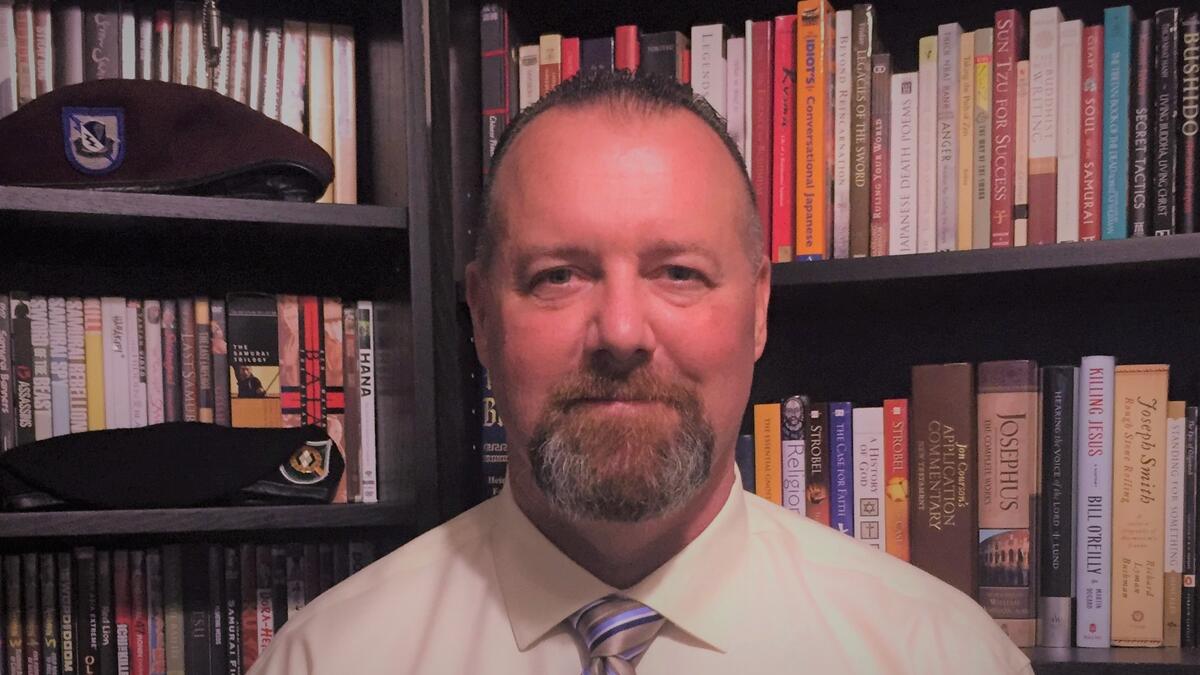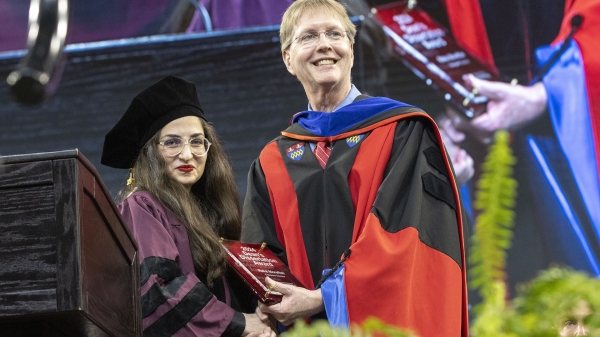Career in military and law enforcement launches psychology interest for two-time Sun Devil

John Augustus Rose II is graduating this spring with a Master of Science in psychology from ASU Online and The College of Liberal Arts and Sciences.
Editor’s note: This story is part of a series of profiles of notable spring 2023 graduates.
John Augustus Rose II is graduating this spring with a Master of Science in psychology from ASU Online, and it is only the latest achievement in a career filled with accomplishments, including founding and leading a homeless service response team when he was a deputy sheriff.
The retired law enforcement officer and U.S. Army veteran said his experiences while working in those disciplines fueled his interest in psychology, especially patrolling or working with teams in the field, interacting with the community and coordinating among social services providers.
“In order to function in either of those roles successfully — law enforcement and the Army — considering mindsets and circumstances was imperative,” he said. “This helped shape my curiosity and interest in psychology as a major.”
Rose earned his bachelor’s degree in psychology from ASU Online before pursuing his master’s degree and is now considering a doctoral program as well.
“I plan to pursue a PhD in some psychological discipline, but I haven’t yet narrowed this down as my interests are quite varied. I would love to remain at ASU Online as a student if possible,” he said.
The Southern California native now lives in Franklin, Indiana, but managed to forge a strong online community during his time with ASU Online. As an undergraduate student, he joined several honors societies, including Psi Chi at ASU, the international honor society in psychology, and Omicron Delta Kappa at ASU, a leadership honor society for students. As a graduate student, Rose embraced opportunities to work with students and faculty, crediting his scholastic success, in part, to those experiences.
“ASU has been central to my goals,” he said. “Becoming a course assistant and a research assistant were two of the most important opportunities that opened up for me as an online student at ASU. Growing up, college was always in the conversation as a possibility; however, my focus was on following familial steps into law enforcement and the military. Now my goals include academics, and scholarship is a big part of who I am becoming.”
Through his ASU experience, he is changing the trajectory for his family. Joining him on the trip to Arizona, his son John will get to experience Rose’s accomplishments as he’s honored during the Veterans Honor Stole Ceremony and celebrated during the commencement and convocation ceremonies.
He shares his ASU Online experience — what he learned, his advice to other students and what the future holds after graduation.
Question: What was your “aha” moment when you realized you wanted to study the field you majored in?
Answer: Both of my former professions included elements of psychology, and the subject has always held great interest for me. So when I returned to school, psychology seemed like the most appropriate and natural fit. I love the major and have never regretted my choice.
Q: What’s something you learned while at ASU Online — in the classroom or otherwise — that surprised you or changed your perspective?
A: Arizona State University’s commitment to engagement and opportunity was surprising. I did not expect to meet so many caring and motivating faculty and classmates, nor did I expect the number of opportunities I have been able to take advantage of for academic experience. I have been a research assistant, undergraduate teaching assistant (UGTA), course assistant (CA), graduate services assistant (GSA), etc.
Another surprise was ASU’s commitment to its charter, which emphasizes who is included, not excluded, and how they succeed. In my experience, this is not simply an attractive motto for ASU, it is an operational goal supported by real, positive consideration and action. I experienced this for myself, and it deepened both my respect and affection for this great institution.
Q: Why did you choose ASU Online?
A: I chose ASU for its academic reputation and because of the outreach and support that I received during the application process.
Q: Which professor taught you the most important lesson while at ASU Online?
A: I have had the great fortune of developing relationships with several faculty members who have passed on not only knowledge but opportunity and guidance as well. These relationships have spanned the entirety of my years at ASU Online and continue to this day.
The most influential professors have been Dr. Natalie Fabert and Dr. Laura Clemons. Both have been closely involved with my academic journey since my undergraduate classes and have been instrumental in my development as a student, UGTA, research assistant and CA. While I have received many valuable lessons from these amazing individuals, the most salient have come as a result of their examples. From the smallest assignment to larger interpersonal matters, I learned the importance (and saw the results) of honest, altruistic support, fair and equitable consideration, firm yet caring approach and an open door for thoughts, ideas and dreams.
Q: What’s the best piece of advice you’d give to those still in school?
A: I have three pieces of advice for those still in school:
- Believe in yourself. You can accomplish whatever you set your mind to.
Enjoy the academic ride! There are ups and downs, but this is a special time in life, so make the most of it.
Set an academic goal and stick with it. Academics can become frustrating or a grind at times, and this is precisely when focusing on an overall goal is the most important.
Q: What was your favorite spot for power studying?
A: Being an online student, my “power studying” occurs in my home office. My favorite spot is in my recliner near the window.
Q: What are your plans after graduation?
A: After graduation, I plan to work as a faculty assistant and pursue my PhD.
Q: If someone gave you $40 million to solve one problem on our planet, what would you tackle?
A: I would try to address education inequalities. Education has the power to lift and empower individuals, groups and communities. Unfortunately, education seems permanently tied to money and is far from attainable for everyone despite ability, merit or effort. I would use a financial gift such as this to develop funding opportunities for underprivileged students or for students who have extenuating circumstances preventing them from pursuing advanced education.
Written by Margot LaNoue for ASU Online.
More Science and technology
Extreme HGTV: Students to learn how to design habitats for living, working in space
Architecture students at Arizona State University already learn how to design spaces for many kinds of environments, and now they…

Human brains teach AI new skills
Artificial intelligence, or AI, is rapidly advancing, but it hasn’t yet outpaced human intelligence. Our brains’ capacity for…

Doctoral students cruise into roles as computer engineering innovators
Raha Moraffah is grateful for her experiences as a doctoral student in the School of Computing and Augmented Intelligence, part…